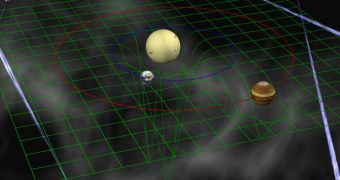A group of scientists announces the development of a novel method of determining the combined weight of all the planets in the solar system.
The approach relies on analyzing the radio signals emitted by distant magnetars, which are a very particular type of neutron stars.
These structures appear in space after massive stars reach the end of their burning cycle, and then explode in giant supernova events.
As this happens, their cores collapse in on themselves, producing either neutron stars or black holes. Special types of neutron stars include pulsars and magnetars.
According to the team behind the new research, analyzing the radio signals emitted by magnetars could be used to calculate the combined mass of all planets orbiting the Sun.
The international research group says that its method can be used to account for the moons and rings around these planets as well. This has never been done before.
Naturally, some estimates of how heavy planetary systems are already exist, having been produced by spacecrafts such as Cassini and the Mars Reconnaissance Orbiter (MRO).
But no one can say for certain precisely how heavy Saturn and all of its rings and moons are.
“This is first time anyone has weighed entire planetary systems – planets with their moons and rings. In addition, we can provide an independent check on previous results, which is great for planetary science,” says David Champion.
The expert is based in Bonn, Germany, at the Max Planck Institute for Radio Astronomy, and was also the leader of the team that conducted the new investigation.
A paper detailing the findings has already been accepted for publication in an upcoming issue of the esteemed scientific Astrophysical Journal, Space reports.
“Astronomers need this accurate timing because they're using pulsars to hunt for gravitational waves predicted by Einstein's general theory of relativity,” the leader of the MPIRA Fundamental Physics in Radio Astronomy research group, Michael Kramer.
“Finding these waves depends on spotting minute changes in the timing of pulsar signals, and so all other sources of timing error must be accounted for, including the traces of solar system planets,” he adds.
The group of investigators that conducted the new work are based at universities and research groups in the United States, the United Kingdom, Canada, Australia, and Germany.

 14 DAY TRIAL //
14 DAY TRIAL //